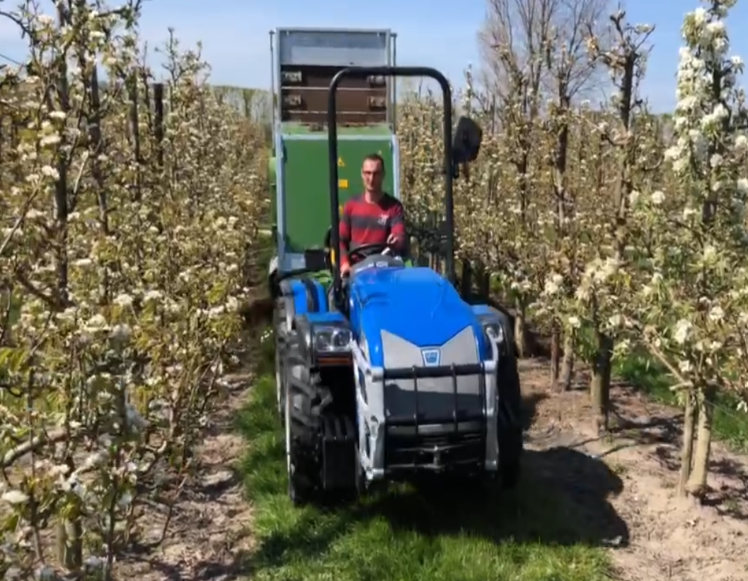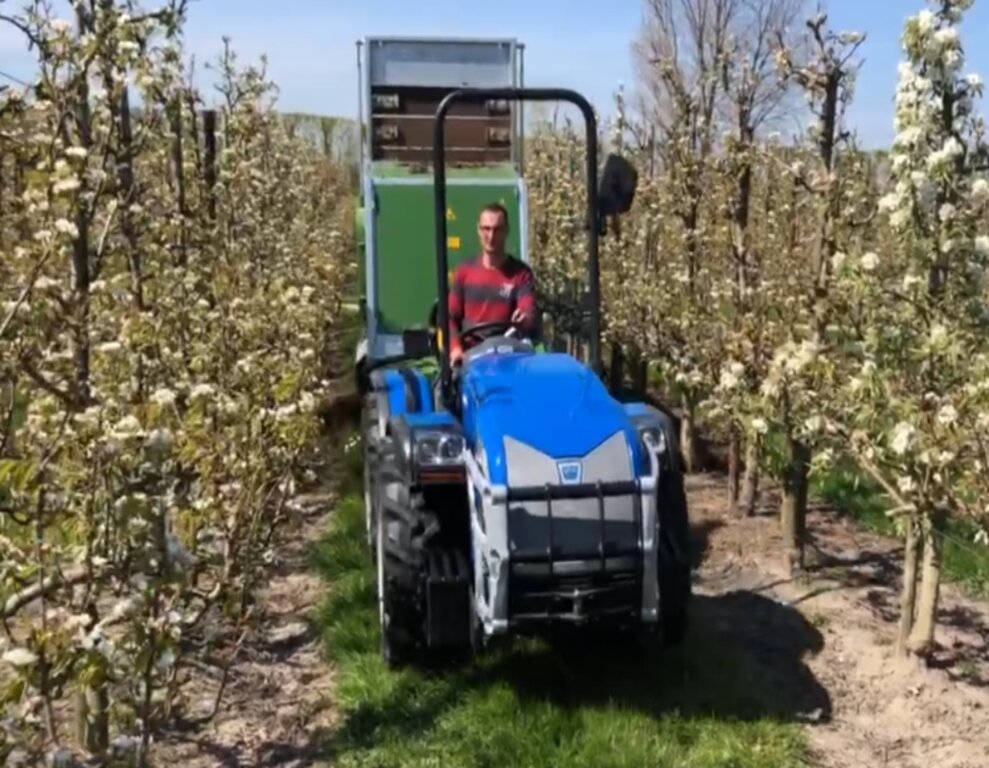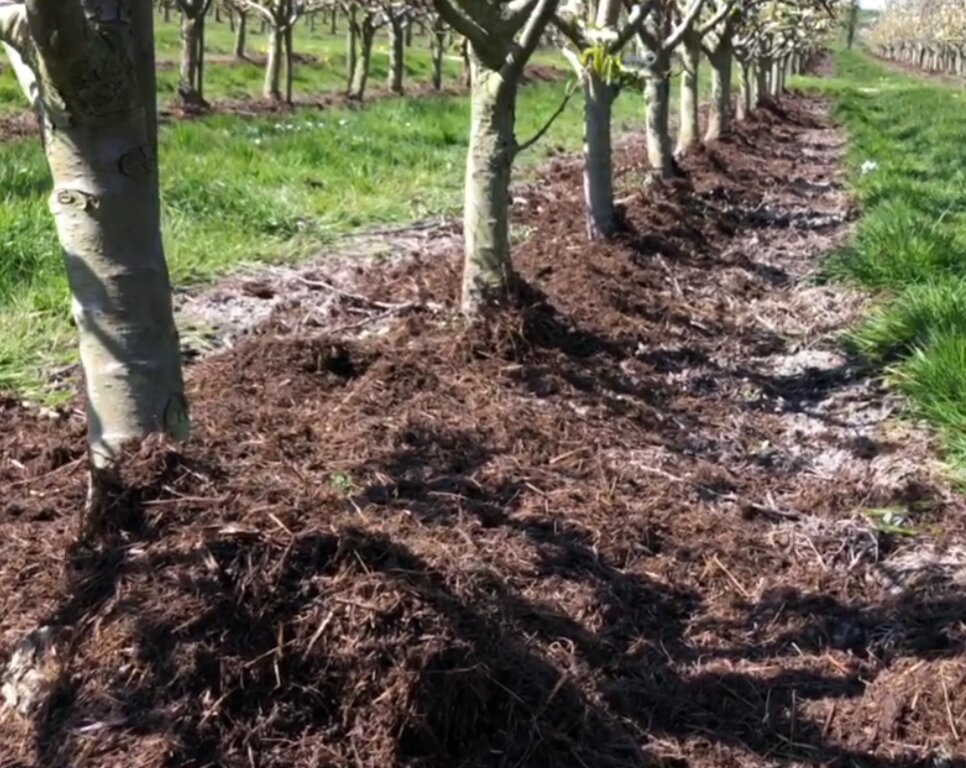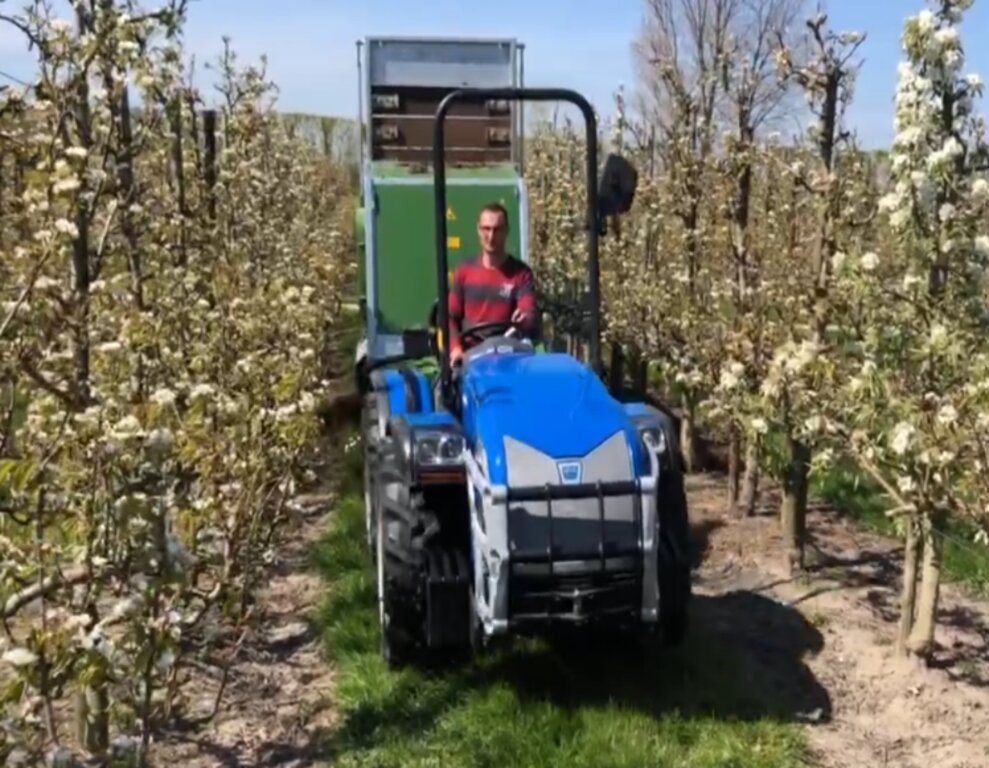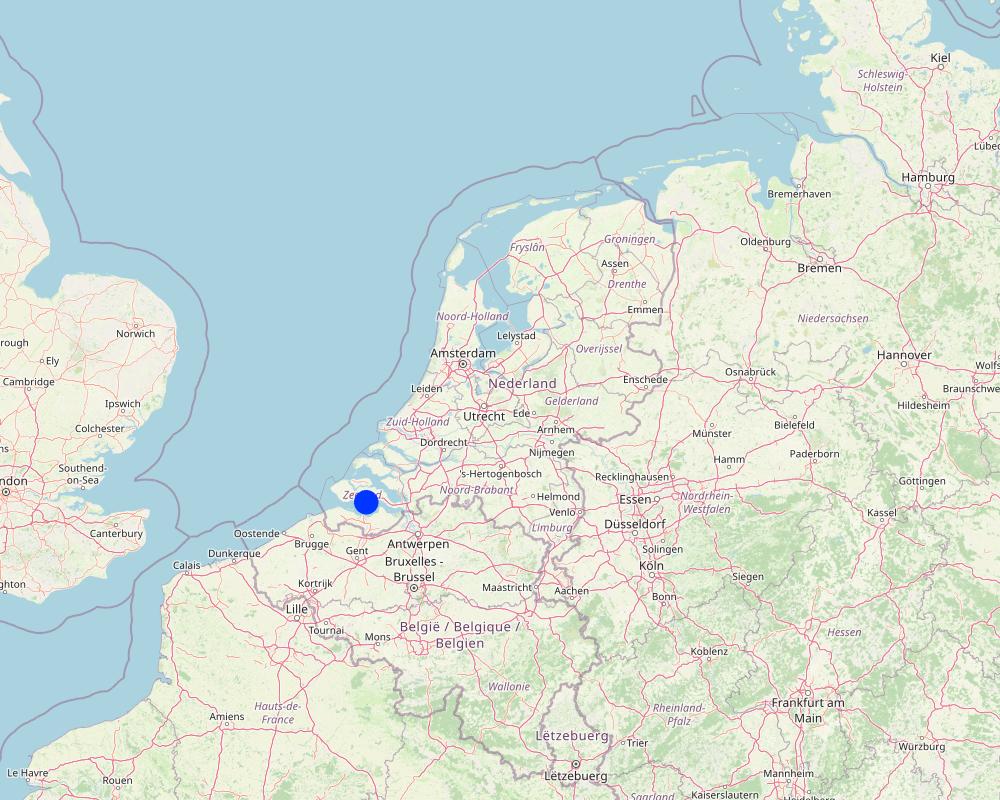Soil improvement in orchards through use of bokashi (fermented clippings) [Netherlands]
- Creation:
- Update:
- Compiler: Alan Radbourne
- Editor: –
- Reviewers: Rima Mekdaschi Studer, William Critchley
Bodemverbetering in fruitteelt met behulp van bokashi
technologies_6820 - Netherlands
View sections
Expand all Collapse all1. General information
1.2 Contact details of resource persons and institutions involved in the assessment and documentation of the Technology
Key resource person(s)
SLM specialist:
Hoogendijk Tijmen
Southern Agriculture and Horticulture Organization (ZLTO)
Netherlands
land user:
Rijk Richard
Maatschap P.M. Rijk en Y.A.J. Rijk-Helmstrijd
Netherlands
SLM specialist:
Dieleman Wico
ZLTO
Netherlands
Name of project which facilitated the documentation/ evaluation of the Technology (if relevant)
European Interreg project FABulous Farmers {'additional_translations': {}, 'value': 6194, 'label': 'Name of the institution(s) which facilitated the documentation/ evaluation of the Technology (if relevant)', 'text': 'Zuidelijke Land en Tuinbouw Organisatie (ZLTO) - Netherlands', 'template': 'raw'}1.3 Conditions regarding the use of data documented through WOCAT
The compiler and key resource person(s) accept the conditions regarding the use of data documented through WOCAT:
Yes
1.4 Declaration on sustainability of the described Technology
Is the Technology described here problematic with regard to land degradation, so that it cannot be declared a sustainable land management technology?
No
2. Description of the SLM Technology
2.1 Short description of the Technology
Definition of the Technology:
Bokashi is a soil amendment formed by fermenting clippings of vegetation. It helps to increase soil organic matter content in fruit orchards.
2.2 Detailed description of the Technology
Description:
Bokashi is a soil amendment formed from fermentation of vegetative clippings. It has a high organic matter content. Furthermore, due to the fermentation process, bokashi is practically free of weed seeds. The high organic matter content feeds soil organisms and results in the increase of soil organic matter, and in turn this supports the growth of micro-organisms, improves water holding capacity and increases soil fertility. Bokashi is applied once a year underneath the fruit trees in autumn after the harvest by a mechanical spreader. Here 16 tonnes of bokashi was applied on 1ha. Results have shown that fruit trees grow better in the resulting healthier soil, but spreading the bokashi is labour intensive. This technology has been applied on a parcel of land in Zeeland in the south of the Netherlands.
2.3 Photos of the Technology
2.5 Country/ region/ locations where the Technology has been applied and which are covered by this assessment
Country:
Netherlands
Region/ State/ Province:
Zeeland
Further specification of location:
Kamperland
Specify the spread of the Technology:
- evenly spread over an area
If precise area is not known, indicate approximate area covered:
- < 0.1 km2 (10 ha)
Is/are the technology site(s) located in a permanently protected area?
No
Map
×2.6 Date of implementation
Indicate year of implementation:
2020
2.7 Introduction of the Technology
Specify how the Technology was introduced:
- through land users' innovation
- through projects/ external interventions
Comments (type of project, etc.):
Introduced by a soil expert
3. Classification of the SLM Technology
3.1 Main purpose(s) of the Technology
- reduce, prevent, restore land degradation
- preserve/ improve biodiversity
- adapt to climate change/ extremes and its impacts
- mitigate climate change and its impacts
3.2 Current land use type(s) where the Technology is applied
Land use mixed within the same land unit:
No

Forest/ woodlands
- Orchard
Are the trees specified above deciduous or evergreen?
- deciduous
Products and services:
- Fruits and nuts
Comments:
Fruit orchards (apples, pears etc) in a temperate region
3.3 Has land use changed due to the implementation of the Technology?
Has land use changed due to the implementation of the Technology?
- No (Continue with question 3.4)
3.4 Water supply
Water supply for the land on which the Technology is applied:
- mixed rainfed-irrigated
3.5 SLM group to which the Technology belongs
- improved ground/ vegetation cover
- integrated soil fertility management
- integrated pest and disease management (incl. organic agriculture)
3.6 SLM measures comprising the Technology

agronomic measures
- A2: Organic matter/ soil fertility
3.7 Main types of land degradation addressed by the Technology

chemical soil deterioration
- Cn: fertility decline and reduced organic matter content (not caused by erosion)
3.8 Prevention, reduction, or restoration of land degradation
Specify the goal of the Technology with regard to land degradation:
- prevent land degradation
4. Technical specifications, implementation activities, inputs, and costs
4.1 Technical drawing of the Technology
Author:
Tijmen Hoogendijk
Date:
29/09/2023
4.2 General information regarding the calculation of inputs and costs
Specify how costs and inputs were calculated:
- per Technology area
Indicate size and area unit:
1ha
If using a local area unit, indicate conversion factor to one hectare (e.g. 1 ha = 2.47 acres): 1 ha =:
1ha = 2.47 acres
other/ national currency (specify):
EUR
If relevant, indicate exchange rate from USD to local currency (e.g. 1 USD = 79.9 Brazilian Real): 1 USD =:
0.95
Indicate average wage cost of hired labour per day:
250
4.3 Establishment activities
| Activity | Timing (season) | |
|---|---|---|
| 1. | Spreading compost | August |
| 2. | Cultivating the land | August |
| 3. | Sowing catch crop | August |
4.4 Costs and inputs needed for establishment
| Specify input | Unit | Quantity | Costs per Unit | Total costs per input | % of costs borne by land users | |
|---|---|---|---|---|---|---|
| Labour | Labour | ha | 6.0 | 35.0 | 210.0 | 100.0 |
| Equipment | Machinery | ha | 1.0 | 50.0 | 50.0 | 100.0 |
| Fertilizers and biocides | Bokashi purchase | ha | 25.0 | 12.5 | 312.5 | 100.0 |
| Total costs for establishment of the Technology | 572.5 | |||||
| Total costs for establishment of the Technology in USD | 602.63 | |||||
4.7 Most important factors affecting the costs
Describe the most determinate factors affecting the costs:
Access to suitable machinery to reduce the labour costs.
5. Natural and human environment
5.1 Climate
Annual rainfall
- < 250 mm
- 251-500 mm
- 501-750 mm
- 751-1,000 mm
- 1,001-1,500 mm
- 1,501-2,000 mm
- 2,001-3,000 mm
- 3,001-4,000 mm
- > 4,000 mm
Specify average annual rainfall (if known), in mm:
800.00
Agro-climatic zone
- sub-humid
5.2 Topography
Slopes on average:
- flat (0-2%)
- gentle (3-5%)
- moderate (6-10%)
- rolling (11-15%)
- hilly (16-30%)
- steep (31-60%)
- very steep (>60%)
Landforms:
- plateau/plains
- ridges
- mountain slopes
- hill slopes
- footslopes
- valley floors
Altitudinal zone:
- 0-100 m a.s.l.
- 101-500 m a.s.l.
- 501-1,000 m a.s.l.
- 1,001-1,500 m a.s.l.
- 1,501-2,000 m a.s.l.
- 2,001-2,500 m a.s.l.
- 2,501-3,000 m a.s.l.
- 3,001-4,000 m a.s.l.
- > 4,000 m a.s.l.
Indicate if the Technology is specifically applied in:
- not relevant
5.3 Soils
Soil depth on average:
- very shallow (0-20 cm)
- shallow (21-50 cm)
- moderately deep (51-80 cm)
- deep (81-120 cm)
- very deep (> 120 cm)
Soil texture (topsoil):
- medium (loamy, silty)
Soil texture (> 20 cm below surface):
- coarse/ light (sandy)
Topsoil organic matter:
- medium (1-3%)
If available, attach full soil description or specify the available information, e.g. soil type, soil PH/ acidity, Cation Exchange Capacity, nitrogen, salinity etc.
Lutum %13
Org matter % 1,2
pH 7,5
Soil type Sabulous clay (zavel)
CEC (mmol/kg)19
5.4 Water availability and quality
Ground water table:
< 5 m
Availability of surface water:
good
Water quality (untreated):
for agricultural use only (irrigation)
Water quality refers to:
both ground and surface water
Is water salinity a problem?
Yes
Specify:
There is a shallow salt water bubble in the subsoil that increases the salinity level of ground and surface water
Is flooding of the area occurring?
No
5.5 Biodiversity
Species diversity:
- medium
Habitat diversity:
- low
5.6 Characteristics of land users applying the Technology
Sedentary or nomadic:
- Sedentary
Market orientation of production system:
- commercial/ market
Off-farm income:
- less than 10% of all income
Relative level of wealth:
- average
Individuals or groups:
- cooperative
Level of mechanization:
- mechanized/ motorized
Gender:
- men
Age of land users:
- middle-aged
5.7 Average area of land used by land users applying the Technology
- < 0.5 ha
- 0.5-1 ha
- 1-2 ha
- 2-5 ha
- 5-15 ha
- 15-50 ha
- 50-100 ha
- 100-500 ha
- 500-1,000 ha
- 1,000-10,000 ha
- > 10,000 ha
Is this considered small-, medium- or large-scale (referring to local context)?
- medium-scale
5.8 Land ownership, land use rights, and water use rights
Land ownership:
- company
Land use rights:
- individual
- Partnership
Are land use rights based on a traditional legal system?
No
Specify:
Land use rights are based on ownership or lease agreement
5.9 Access to services and infrastructure
health:
- poor
- moderate
- good
education:
- poor
- moderate
- good
technical assistance:
- poor
- moderate
- good
employment (e.g. off-farm):
- poor
- moderate
- good
markets:
- poor
- moderate
- good
energy:
- poor
- moderate
- good
roads and transport:
- poor
- moderate
- good
drinking water and sanitation:
- poor
- moderate
- good
financial services:
- poor
- moderate
- good
6. Impacts and concluding statements
6.1 On-site impacts the Technology has shown
Socio-economic impacts
Production
crop production
Comments/ specify:
Mulch effect improved crop growth
Ecological impacts
Soil
soil moisture
Comments/ specify:
Mulch keeps better soil moisture
soil loss
Comments/ specify:
More material reduced soil loss
nutrient cycling/ recharge
Comments/ specify:
Mulch provides more organic matter for nutrient cycling activity
soil organic matter/ below ground C
Comments/ specify:
Mulch provides soil organic matter to soil profile
Specify assessment of on-site impacts (measurements):
Subjective assessments, no direct measures were taken.
6.2 Off-site impacts the Technology has shown
Specify assessment of off-site impacts (measurements):
No direct measures were taken
6.3 Exposure and sensitivity of the Technology to gradual climate change and climate-related extremes/ disasters (as perceived by land users)
Gradual climate change
Gradual climate change
| Season | increase or decrease | How does the Technology cope with it? | |
|---|---|---|---|
| seasonal rainfall | summer | decrease | well |
Comments:
Mulch help keeps soil moisture in during increasingly frequent dry spells.
6.4 Cost-benefit analysis
How do the benefits compare with the establishment costs (from land users’ perspective)?
Short-term returns:
slightly positive
Long-term returns:
slightly positive
How do the benefits compare with the maintenance/ recurrent costs (from land users' perspective)?
Short-term returns:
slightly positive
Long-term returns:
slightly positive
6.5 Adoption of the Technology
- single cases/ experimental
6.6 Adaptation
Has the Technology been modified recently to adapt to changing conditions?
No
6.7 Strengths/ advantages/ opportunities of the Technology
| Strengths/ advantages/ opportunities in the land user’s view |
|---|
| Soil moisture retention improvements |
| Soil organic matter improvements |
| Soil life increased significantly after applying bokashi to the soil. There was no eutrophication |
| Strengths/ advantages/ opportunities in the compiler’s or other key resource person’s view |
|---|
| Reduced weed burden in compost with fermentation |
6.8 Weaknesses/ disadvantages/ risks of the Technology and ways of overcoming them
| Weaknesses/ disadvantages/ risks in the land user’s view | How can they be overcome? |
|---|---|
| Time intensive to spread compost | NA |
| Limited availability of bokashi currently | Knowledge exchange to support more uptake of bokashi production |
7. References and links
7.1 Methods/ sources of information
- field visits, field surveys
3 field visits to support implementation
When were the data compiled (in the field)?
04/05/2023
Links and modules
Expand all Collapse allLinks
No links
Modules
No modules


